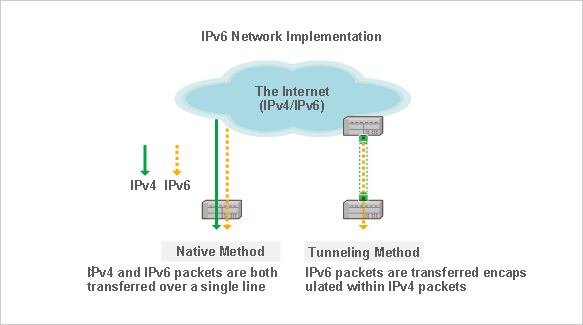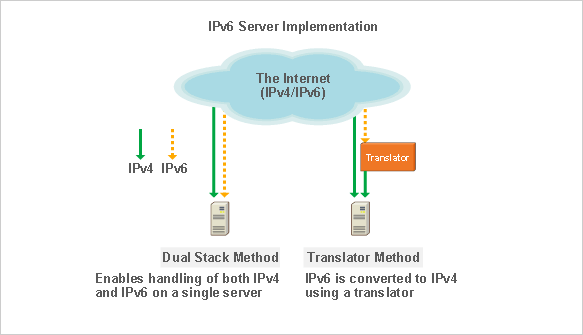Top of Page
- Links to move inside this page.
- HOME
- Technology
- IIJ Technology (archives)
- IPv6 Technology
IPv6 Technology
IPv6 is the successor to IPv4, which is the current Internet protocol version. In February of 2011 the IPv4 address pool at IANA was exhausted, and in April of the same year the IPv4 address pool at APNIC was also exhausted, so we have to migrate to IPv6 as soon as possible.
IIJ has taken international initiatives to develop services based on the IPv6 Internet, which will be a next-generation information infrastructure technology. IIJ will continue to develop operational techniques for stability and look for the untapped potential of the Internet.
IIJ Service IPv6 Support Schedule
Features of IPv6
Wide Address Space

* Example of when /48 is allocated.
IPv6 addresses have a much wider address space than IPv4 addresses, and are practically inexhaustible. They feature stateless address autoconfiguration (SLAAC) for the automatic configuration of IPv6 addresses and default routes, and a fixed header length of 40 bytes.
IPv6 Network Implementation
IPv6 Native Access Environment and IPv6 Tunneling Access Environment

IPv6 Native Access Environment
Use of an IPv6 network over link layers such as Ethernet. This enables construction of an IPv6-only network unaffected by IPv4 networks, and is characterized by a simple protocol stack. The IIJ backbone is a native IPv6/IPv4 dual stack environment. In addition to using this kind of leased line or data center connection, customers can now use a native access environment easily with NTT´s FLET´S.
IPv6 Tunneling Access Environment
Use of an IPv6 network through an IPv6-over-IPv4 tunnel via methods such as IPIP, PPTP, or L2TP. An IPv6 network can be constructed easily utilizing widespread IPv4 Internet access. A key characteristic of this method is the ease of implementation, but communications are less efficient because the protocol stack is complicated and encapsulation overhead is required. Also, because the tunnel portion has a smaller MTU size, care must be taken with IPv6 Path MTU Discovery behavior.
Because this method also requires IPv4 Internet access, it cannot be used unless an IPv4 address can be obtained. This is a valid solution during the period of migration to IPv6, but it is important to recognize that it is not an answer to the problem of IPv4 address exhaustion.
IPv6 Server Implementation
IPv6/IPv4 Dual Stack Access Environment and Translator

IPv6/IPv4 Dual Stack Access Environment
Because the server itself can handle both IPv4 and IPv6, this is the most suitable method from an operational perspective. Most major server OSes and server software already support IPv6.
Translator
A method in which IPv6 packets are converted to IPv4 packets using a translator device. There is no need to make any modifications to the server, but the operational cost is increased because of factors such as more complicated log analysis due to the translator´s address being saved to server access logs.
Author: Yuhei Onohara
Service Development Section, Network Service Department, IIJ Service Division
Mr. Onohara joined IIJ in 2007. He worked on the implementation and operation of leased-line access services, and is now engaged in the development and operation of broadband services.
Author: Sotohide Miyamoto
Service Development Section, Network Service Department, IIJ Service Division
Mr. Miyamoto joined IIJ in 1999. He worked on the implementation and operation of leased-line access services, then went on to accumulate experience in network integration work. Following this, he was assigned to the development of enterprise network services such as VPN and mobile services.
- Related Contents
End of the page.
